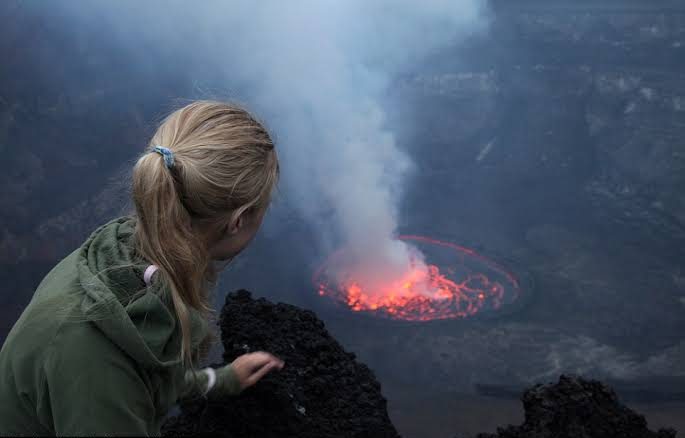5 Facts about Mount Nyiragongo
5 Facts about Mount Nyiragongo will give you an insight into the most interesting bits of this volcanic mountain located in the Democratic Republic of Congo. Mount Nyiragongo is located in Virunga National Park the oldest national park in Africa and the richest in flora and fauna. The park is known globally because it is a habitat to the endangered mountain gorillas that can be seen when you participate in gorilla trekking in Congo where a number of Congo gorilla families will be seen in the park.

The park is also famous for its 2 active volcanoes mount Nyamuragira and mount Nyiragongo which are part of the virunga mountain chains where you can see other dormant volcanoes like mount Mikeno which s also found in virunga national park, Mount Sabyinyo, Mount Muhabura, Mount Gahinga shared by Volcanoes national park and mgahinga national park and mount karisimbi and mount Bisoke in Volcanoes national park. Among the mountains, mount Nyiragongo is the most interesting because of a number of reasons and facts that can be explained below;
The 5 Facts About Mount Nyiragongo
The 5 Facts about Mount Nyiragongo are interesting facts about mount Nyiragongo that will interest you to participate in the Mount Nyiragongo hike and these include;
- Stratovolcano: Mount Nyiragongo is a stratovolcano sides composed of a number of cinder cones, well-aligned volcanic ash, hardened lava, blocks characterised by explosive eruptions that do not pose threats to property because as soon as they move along the ground they harden which is quite different when it comes to mount Nyiragongo which has a low silica level making the lava travel as quickly as possible because the low silica kevels make the magma or lava fluid-like making it travel faster than the lava with high content of silica which makes them travel slower and harden quickly.
- Eruption: Mount Nyiragongo is one of the most active volcanoes in the world that have a number of 34 recorded eruption times the last eruption that was recorded happened in 2016. The active volcano today shows signs of eruption like it happened in 1977 when the lava lake walls became smaller making lava flow at a distance of 60 km/hr his led to the death of over 70 people, destruction of property and the rise of toxic fumes that have posed threats to the neighboring communities where a number of lives were lost after the 2016 eruption.
- The activity of the mountain: Mount Nyiragongo is an active volcano whose volcanic activity can be seen when you visit virunga national park and you participate in mount Nyiragongo hike. At the summit of the mountain, you will be able to see a crater lake that has active lava which is the most voluminous lava lake in the whole world which is an interesting fact. Therefore participate in mount Nyiragongo hike to see the world’s largest fascinating lava lake with lava boiling within the lake which is still erupting till today which can be seen within the lava lake.
- 2002 eruptions: However beautiful the mountain is, it has posed many threats to the people in the neighboring communities of Goma and around Lake Kivu Gisenyi among other towns. The most remembered volcanic eruption that led to a number of misfortunes and deaths was the 2002 eruption where 245 people lost their lives when there was a 13km opening in the southern flank of the mountain where lava escaped to parts of Goma and also through Lake Kivu to Gisenyi and part of Gisenyi international airport. Although warnings had been made and over 400,000 people were evacuated, many people lost their lives due to the earthquakes that collapsed buildings, high carbon dioxide content that was released to the atmosphere. With the 2002 eruptions after 6 months of the volcanic activity, the mount erupted again until today however this is confined to the lava lake that was formed.
- Carbon dioxide toxicity: From the 2002 mount Nyiragongo eruptions, it led to the emissions of toxic gases into the atmosphere leading to a number of deaths increasing especially among children and with the new vent on the northeastern part of the crater, the carbon dioxide fumes have risen cause a number of diseases and deaths and there is also fear that the new vent on the eastern edge of the crater will cause eruption which are one of the dreaded nature’s events for the people around the mountain because with the last eruption, it destroyed their property and a number of lives were lost.



